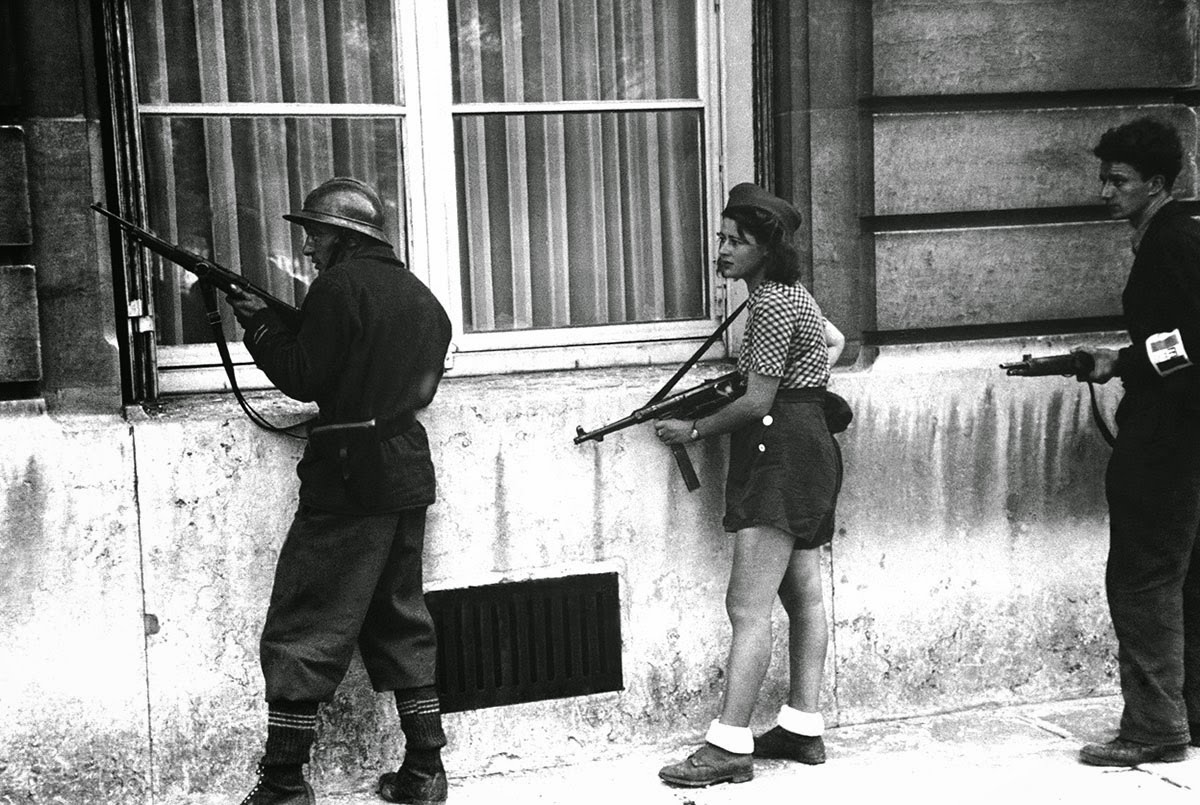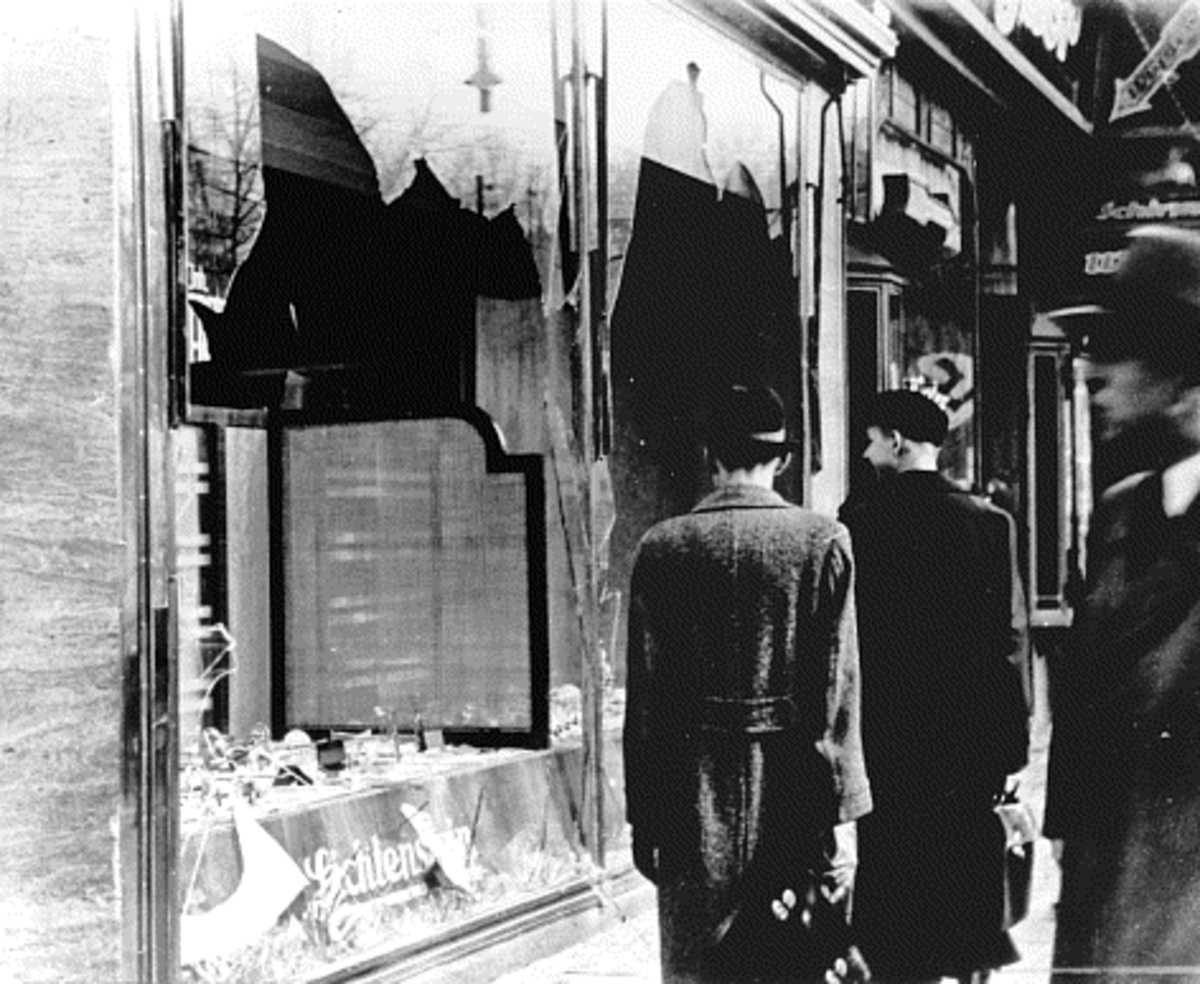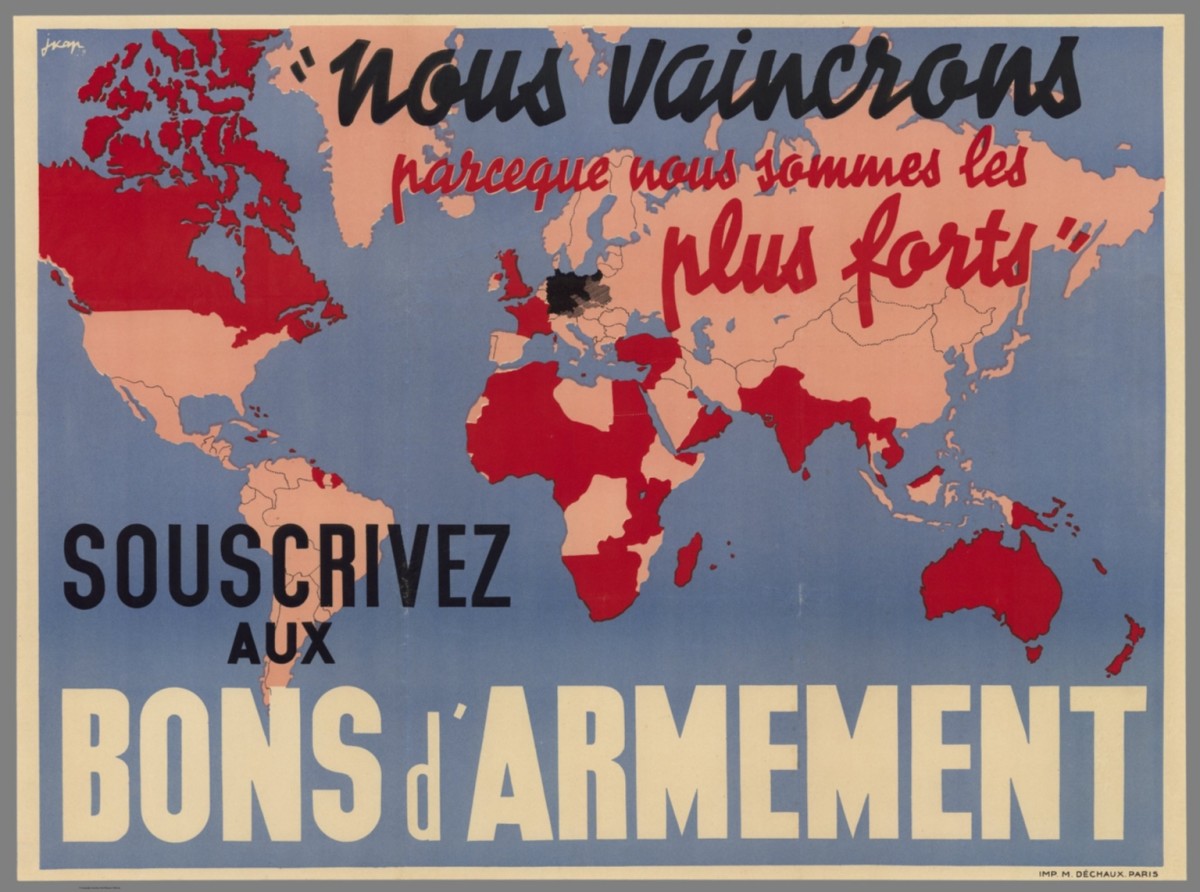- HubPages»
- Education and Science»
- History & Archaeology»
- History of the Modern Era»
- Twentieth Century History
What happenned to the Jews in France during World War Two
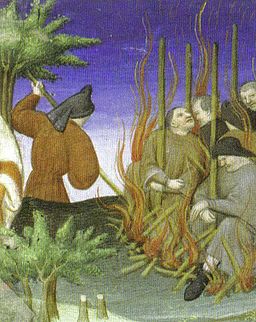
A brief history of Jews in France
There had been Jews in France since the time of the Romans, however in 1394 the Jews were expelled and just small groups remained in Bordeaux and Alsace Lorraine, but by 1789 on the eve of the French Revolution there were approximately 30,000 Jews in France. The new revolutionary French government was the first power in Europe to acknowledge and give rights to Jews as citizens in the mechanism of the Emancipation Act. Throughout Europe there was an increase in Anti-Semitic behaviours so the obvious choice for the migrant Jew was France and accordingly during the nineteenth century the Jewish population in France expanded rapidly with Jews mainly from Eastern Europe. Following the annexation of Alsace Lorraine by Germany in 1871, many of the Jews moved to Paris and these Jews were estimated in 1939 to represent 18 per cent of the French Jews. These people were important; they were wealthy professional people, members of the upper class holding distinguished positions in banking and business.
A welcome from France following the First World War
By the end of the nineteenth century estimates of the Jewish population in France had risen to 90,000 of which 50,000 lived in Paris. To these Jews were added those from Russia after the overthrow of the Tsar. France had lost so much manpower during the war that these Jews were welcomed. By 1935 the estimated amount of Jews was 260,000 including many from Germany and Austria and up to 200,000 living in Paris.
More arrivals in the First years of the War
The Jews tended to live with people in the same socio economic groups and were therefore sprawled all over the city rather than in a ghetto .After the Germans invaded Belgium and Holland more Jews fled to France initially to Paris and then moving on to the South to escape from the Germans; yet many returned, the German army were not oppressive and were treating a Parisians well exhibiting little in the way of antisemitism.
The Jewish Statute
Until the German occupation French Jews had been allowed to be full citizens of the French Third Republic, but within weeks, on the 22nd July 1940 a committee was set up in the Vichy area to consider (the nationality of Jews who had recently been nationalised) and wherever possible, revoke the citizenship of the Jews. A month later legislation that had been enacted to prevent anti-Semitic propaganda was repealed on 3rd October 1940 the Jewish Statute was proclaimed. This statute saw the reference to Jewish people as a “race” rather than a “religion” as it had previously been regarded. Furthermore Jewish people were removed from public employment and professional jobs. The Jews were only allowed to hold jobs involving manual labour or very low public office which allowed for no advancement. The position of the Jew had changed in four short months from Independent citizenship to “hunted and scared” as were their German counterparts. This might have been the law but as with all French laws there were exceptions, by the end of 1941 there were still over 600 Jews involved in government jobs.
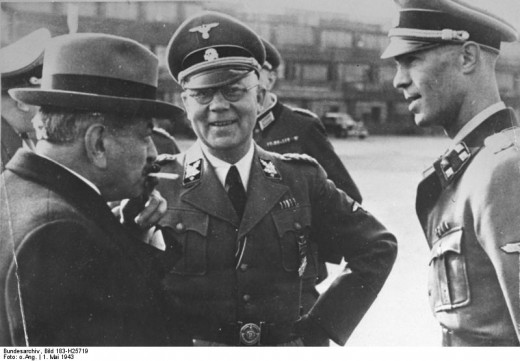
Laval announces Vichy attitude to foreign Jews
In October 1940 the Nazis expelled some 7500 German Jews from the occupied Alsace Lorraine taking them to the border of Vichy France which sent them all to Jewish refugee camps at Gurs and Rivesalgates near the Pyrenees where they joined thousands of other refugees. On 4th October 1940, the Vichy government, headed by Laval announced that it would intern foreign Jews in the camps.
Controle des Administrations Provisoires
In October 1940 in Vichy the government created the Controle des Administrations Provisoires which was nominally controlled by the French Ministry of Industrial Production. Its duty was to liaise with the military administration over the sequestration of Jewish businesses. The French governor drew up a list of Jews to be arrested and taken to concentration camps so that their property could be taken and run by Frenchmen. Over 21,000 businesses from small scale to large enterprises were transferred to French- As long as the Jews would never return then the property was safely part of the French economy.
The Vichy as collaborationist
Dr Joseph Billig who has written a definitive history of the CGQJ said “As Executor of the policy of Vichy, and in the occupied zone serving the policy of the occupying authorities, the CGQJ was the instrument par excellence of collaboration. Dannecker reported in February 1941 “The French inspectors formed and instructed in collaboration with our section for Jewish affairs today constitute an elite body” The Vichy government passed a special law that the appointment of administrators of large banks or insurance companies owned by Jews were to be approved by the government; they did not want these institutions to fall into German hands.
Second Jewish Statute
Two months after the establishment of CGQJ came the second Statut des Juifs which amongst other things looked at the status of Jews who had converted to Christianity and for children of mixed marriages.- again this built on the Nazi ideas of Jews as a race rather than a religion- and gave more businesses to be appropriated. The administrators were under the umbrella of Control Organism of the Provincial Administrators, SCAP and its general director M. De Faramond was adamant that no Jew who remained in public should come into contact with any non-Jew. In Mid June 1941 the Paris Prefecture of Police banned all Jewish street traders and lottery ticket sellers and demanded that they hand in their permits.
Property Rights Lost by Jews
On 22ND July 1941 a law was passed which took away the rights of a Jew to own property, administrators could take over the property and decide to sell it as they could also impound any valuable pieces of furniture. There were no dispensations all Jews were for once to be treated equally. – The Vichy government wishing to avoid any displeasure from the non-Jewish Frenchman covered it in sugar saying that the administrator must act as if he were part of the Jewish persons family and must let them retain enough articles for daily use. – the law was designed to pacify critics in that 10 per cent of the value of the sold Jewish properties would be put aside partly to relieve the Jewish poor and the proceeds of the sale would be put in an account in the vendors name but it would be held by the French administration. Laws made in Vichy France were not automatically valid in the occupied zone. After the Germans had studied the provisions of the law of 22nd July they made it part of the fifth German ordinance on 28th September 1941, it is clear from actions like this that the Vichy government was leading the way in aryanisation.
Fine imposed on the Jews of France
The Jewish money held in trust by the Vichy government did not stay safely in trust for long. On 14th December 1941 a special ordinance from the Germans imposed a fine of 1 billion francs on the Jews of France as a result of what they saw as terrorist attacks by Jews on the German army. This could only be paid by selling the remaining Jewish properties and giving up to the Germans all the money held in trust. At this point an order was given that prevented Jews from accessing safety deposit boxes to withdraw anything they owned from the bank. The money was paid on 15 th April 1942 and a final act of appropriation of funds and property was made by the Germans ion 15 September 1942 when two ordinances were issued to the effect that all property owned by Polish , Bohemian and Moravian Jews should be transferred to the Nazi government.
Loss of business and means of support
As soon as a business was transferred into administration by an Aryan all the Jewish workforce were sacked ; often losing their tools and their homes that came with their work.
The huge amount of businesses confiscated
A CQGJ report on the number of businesses it had controlled until early 1944 showed that in the occupied zone there were 29,831 businesses and 12,396 buildings registered as being owned by the Jews; of theses 7,972 businesses were Aryanised, 1708 buildings sold and 7,340 enterprises and buildings liquidated. The report showed how the businesses had been Aryanised 50 % sold intact, 25 per cent broken into parts and sold and the rest either sold by the Jews before the act or deemed to have no value. The amount raised from the sale of these properties was enormous even more than the 1 billion franc fine paid by the French to the Germans. It is estimated that the total cost to the Jews of the aryanisation programme was 8 billion francs.
A Jew for all to see
The Vichy government helped to identify the French Jews by stamping the word “Jew” on their identity and ration cards. When an anti-Jewish law was passed by the Vichy government there were always room for exceptions. There were mitigating circumstances which were to shield a Jew such as War exploits, such as the award of the Military Medal or the Legion of Honour, or having received a number of citations in army orders. If a family had been resident in France for five generations or more then there was exemption or if they could give a unique service to the community they were exempt, but this was ignored by the Nazis and referred to as French softness. It was also a time when it helped to have friends in high places and Vichy officials could always find an exemption category for a person of prestige.
Jewish Shops no longer safe
The turning point for the Vichy Jews came when in October 1942 Jewish shops and businesses were made to display posters stating that their business was a “Jewish Enterprise”, this was just before their ration cards were stamped. Businesses became Aryanised with the administration of the business being transferred to non-Jews, whilst the Jewish proprietors continued doing the work. This was to avoid the situation that had happened in Paris where Aryanisation had meant the move of French Jewish assets to the Germans- most businessmen that survived the war were able to recover their businesses in good shape when they returned. Paul Ulmann, director of La Maison Rouge who had been in business in Claremont since 1891 gave his shares to a trusted employee who fled to a small village and lived quietly there to the end of the war when he returned them to the Ulmann family.
Anti semetic legislation
The anti semetic legislation reached a peak in 1942 when it affected every aspect of a citizens life – for example they could not move their lodgings without informing the police (it would make it easier in later round ups) Radios and bicycles had been confiscated, although the latter was available for use with a special permit and even if they could pay for a telephone al phones in Jewish homes had been disconnected. Food was difficult to find and there were often long queues in shops; it was made worse for the Jews that they were only permitted to enter a Non Jewish shop between 3pm and 4pm- by this time most shops would have sold out of food.
Non Compliance by Individual French men
Jewish Affairs Agents
The agents who dealt with Jewish affairs were a collection of hoodlums, thugs and brutes. Until the last month of the war the Jewish affairs agents did not have full police powers, most notably they did not have the right to arrest suspects. They had to call in the French police who applied rules of law. In time the French police began to pass the Jewish Affairs agents with a look of contempt on their faces.
Defence of the Jews
In Claremont-Ferrand public opinion moved away from passive support of anti-Jewish policies to active defence of Jews and Jewish interests. A report by British intelligence stated that a there were a “considerable number” of French military and police officers in Southern France who had refused to carry out orders for the arrest of the Jews. The concluded that, “It seems beyond doubt that the French population in general strongly disapproves of the campaign”.
Certificate of Aryan origin
To avoid being called up for the camps rich Jews sometimes sought escape. To do this they needed a certificate of Aryan origin. One of the advisors to the Nazi government on Jewish characteristics Georges Alexis Montandon had given the Nazis the following guidelines to enable a doctor to identify a Jew “Blood type AB. Feet poorly arched. Septum slightly depressed at extremity. Lips very prominent, Something Jewish about the total facial cast. Gestures Jewish. Circumcision: very short mucous sheath, but with the fraenum intact” This was quite dubious advice but the Nazis paid well as did the Jews who also came to him for certificates of Aryan origin which he sold enabling the Jews to disappear into the depths of the city or attempt to escape to Switzerland.
Escape
An industry grew up around the demand for escape usually to Spain or Switzerland and there were organisations who charged a large amount to help these Jews disappear across the border. Prices were exorbitant and it was not unheard of for the mountain guides to ask for more money or jewels once the escapee was on the trail, and indeed a number of elderly Jews were killed by their guides as they were delaying the whole group.
Vichy France not a safe haven
A French Jew in the occupied zone was not guaranteed safety by crossing over in Vichy France as the Vichy policy was that if asked by the Germans for Jews, they would send foreign and stateless Jews first, rather than French Jews. It was difficult to cross the demarcation line unobserved and French police hunted any suspects, even for looking Jewish a person could be questioned and interrogated to verify their status. The Vichy government insisted that all round ups of Jews be done by the French police even though they may have been supervised by German soldiers.
The Catholic Church In France
The French Catholic Church denounced the treatment of the Jews by the Germans and the French police. Both the French Catholic and Protestant churches did what they could to save many, especially children from deportation and death.
The treatment of Jews in the Italian Zone
There was one real place of safety for the Jew in France, in the Italian zone which extended its frontier into eight departments in France, including the city of Nice. Here the Italian army refused to recognise either the German or Nazi anti-Semitism, protecting all Jew, French or foreign, over 30,000 Jews lived here in safety. The Vichy tried to arrest these Jews to fulfil their ever hungry master but were forced by the Italian army to retreat, they rather bizarrely said that the foreigners might be guilty of anti-Italian propaganda and therefore could not be allowed out of the country before a trial, which of course was never going to happen as there was never an investigation. The lack of cooperation was reported back to Berlin and the German foreign minister, Ribbentrop flew to Italy to talk to Il Duce (Mussolini). Il Duce blamed the whole problem on the Vichy government whom he said were trying to build a wedge between the two Axis partners. Ribbentrop left without a solution and it was then that Mussolini received a report detailing the atrocities of the Germans in Poland against the Jewish population. The report was so shocking that a tacit consent was given to the protection of the Jews in the Italian occupied part of France.
Count Galeaszzo Ciano
The government determination not to let the Germans get hold of the Jews in the Italian zone was led by the Foreign Minister Count Galeazzo Ciano and scheme after scheme was devised to delay and thwart demands for Jews. It was seen as dirty work and in the words of a member of the Italian High Command “It is already painful enough for the army of a great country to permit crimes of this sort, not to speak of taking part in them”. Unfortunately for the Jews following the armistice in September of 1943 between Italy and the Allies plans to evacuate the Jews along with retreating troops failed as the Americans announced the Armistice early. This resulted in the area being swamped by German troops and many Jews were captured, especially in Nice where many had lived. The Germans put these Jews in a camp near the town of Drancy where the Vichy had previously held foreign Jews awaiting deportation in absolutely squalid conditions, guarded by coldly efficient French police. From this camp the Jews were transferred, mainly to Auschwitz and certain death.
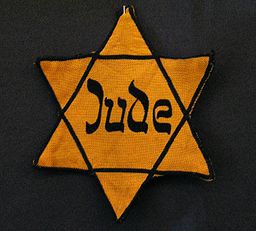
Six point yellow star
In June 1942 the German military command decreed that all Jews over six years of age wear the six point Yellow star on the left hand side of their clothing- the Jews obtained these from the local police station and gave up one point from their clothing ration in exchange! Although this regulation was never enforced in the occupied zone it was strictly monitored in the occupied zone and any attempt to cover it up, such as by carrying a bag or a coat on their shoulder, was met with arrest and transportation to Drancy the feeder camp for Auschwitz. It was not only the Germans who detected this, the French police were also liable to stop Jewish looking people if they were not wearing the star and demand to see identification of an Aryan nature. The Jews soon realised that the stars had to be sewn on very securely as a loose thread that caused the star to fall off could mean deportation and death.
French attitudes to the Yellow Star
Whilst those who were anti-Semitic delighted in this new Jewish humiliation many of those in the French population saw this as increasing evidence of brutality, Jewish war veterans sporting the Croix de Guerre or Medaille Militaire on their lapel and the Yellow star on their jacket, caused the French public to be ashamed. The populace started to wear the Jewish stars in sympathy, sometimes embroidered with a Christian cross or even as one lady did, attached one to her dog’s collar, embroidered “Poodle”. However those who crossed the line too often or too far could find themselves arrested and placed in Drance with other non-desirables. Some French people were happy to raise their hats to salute a passing Jew but others were happy to report them to the authorities, especially those that were in hiding. Post office workers would try to intercept letters, read them and warn the denounced Jew that their life was in danger. There were two anti-Semitic newspapers “Au Pilori” and “Je suis partout” they both published the secret addresses of hiding places and angrily demanded that the Germans seek these Jews out and also pressed the Germans to arrest any prominent Jews that they became aware of.
Deportations
In all of France approximately 70,000 to 80,000 Jews were deported to Germany and subsequently taken to concentration camps, from which few returned. A large amount of these people had been rounded up and sent to the Germans by the French police. An example of this is from Clermont –Ferrand near the Vichy governments headquarters. There were three roundups by the French Police In August 1942 and February and March 1943, either during the night or the early hours of the morning. The people who were arrested were taken to central points and examined before being shipped out. After the first round up in August 1942 over 50 per cent of people on the lists escaped, many had been warned by lowly government officials and hidden by the French people. It was large scale complicity with the need to save fellow French men who happened to be of the Jewish faith. This shows that the government’s anti-Semitic propaganda and policy was rejected. The government records of the time have been preserved and there are lists complete with markings which show who is to be arrested and who will be left alone this time. There are receipts for purchases, for example four bales of hay for the rail trucks, presumably to sit on and details of the food given for the journey which could take some days- two tins of fish, 100 grams of seasoning, 60 grams of jelly,700 grams of bread and half a litre of wine! Almost as if it were a picnic lunch for a day trip to the countryside!
After the August round up when the Vichy admitted that about 50 per cent of its targets had escaped the Government ordered the local prefects to intensify their searches, using all means at their disposal to find the missing people. An Example of this is in September 1942 the prefet delegue for the Puy-de-Dome area wrote instructions to find and arrest 93 foreign Jews who had escaped the August round up in Clermont. In his original instructions the prefect ordered his men to push their investigation “to the farthest removed farms or dwellings in their department”. The order sent to the police and gendarmerie called for an “active search” and by October the police had been advised to use discreet methods to find the addresses of the fugitives. By the March 1943 round up the French police in the Puy de D’ome were taken out under cover of darkness to “avoid being seen by the general public” and the men were not informed of their destination or what they had to do, until they got to the job. The police authority was not convinced that with prior knowledge someone on the police would not warn the Jewish targets or simply the police would feign illness and not turn in for work
It has been argued that the survival of so many Jews who had been targeted for removal and extermination can only be understood in the context of living in a country where so many people (thousands) offered food, shelter or refuge, or simply did only offered their silence, in that they did not report anything that they saw. This has also to be seen in the context of a country where words were dangerous and secrets could be listened to and spread to opposing ears with devastating consequences not only for the Jew but also the person who helped them.



